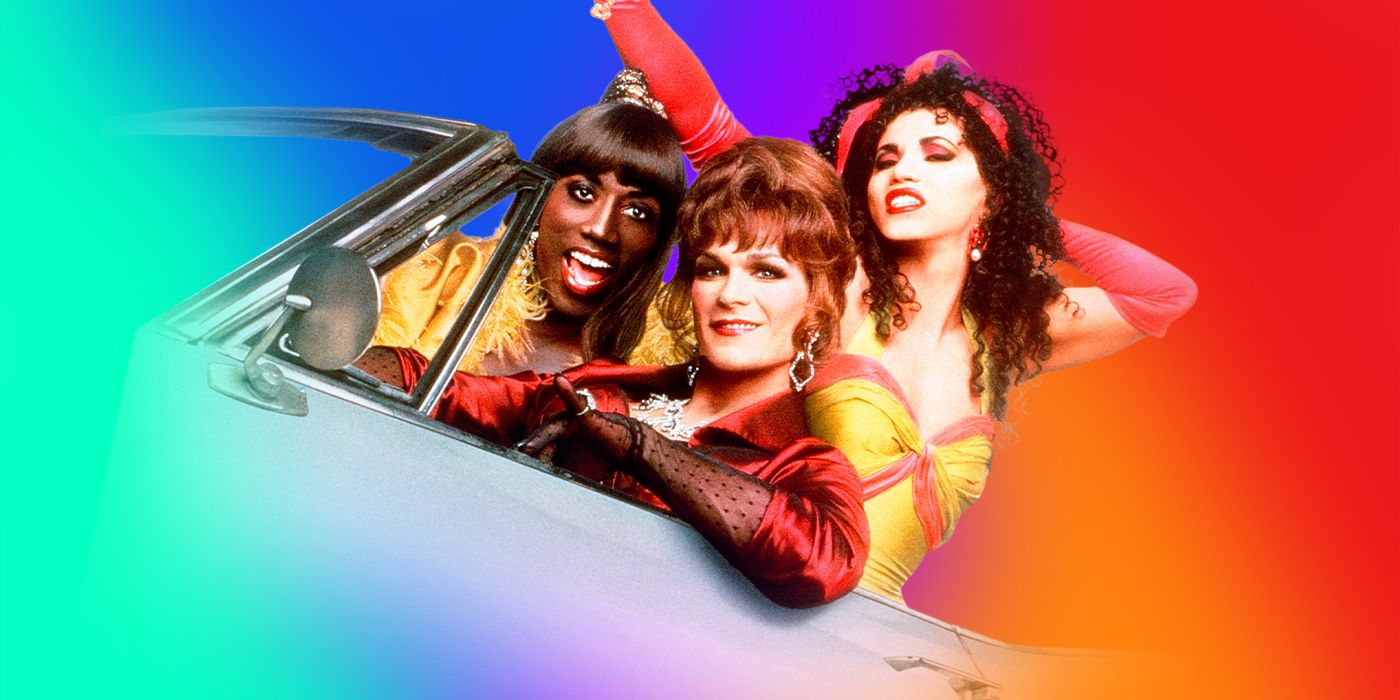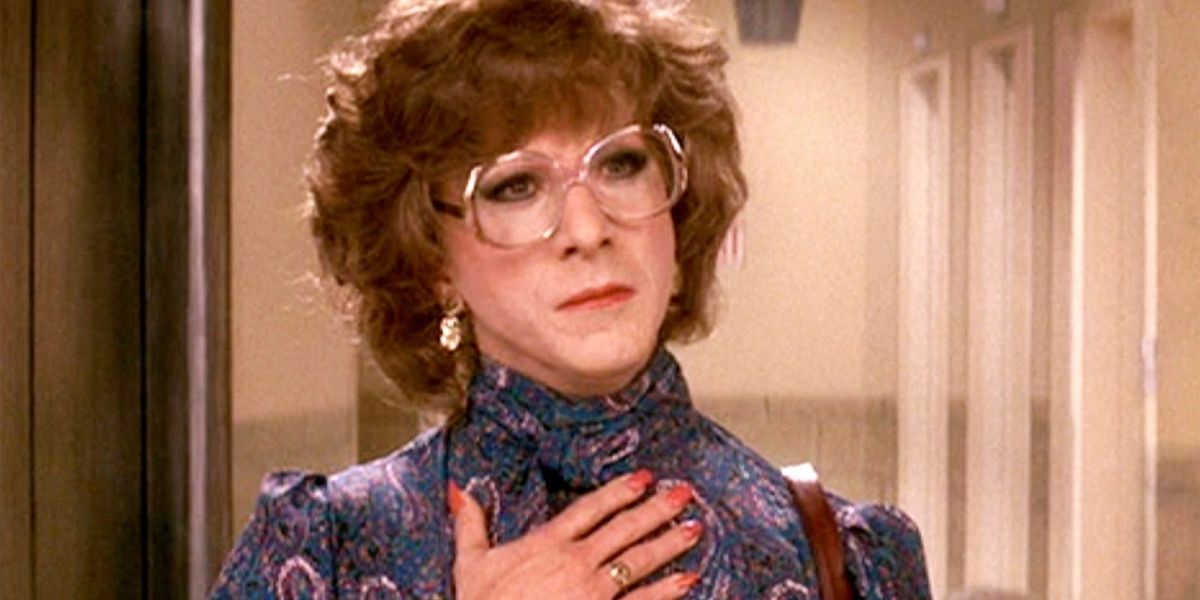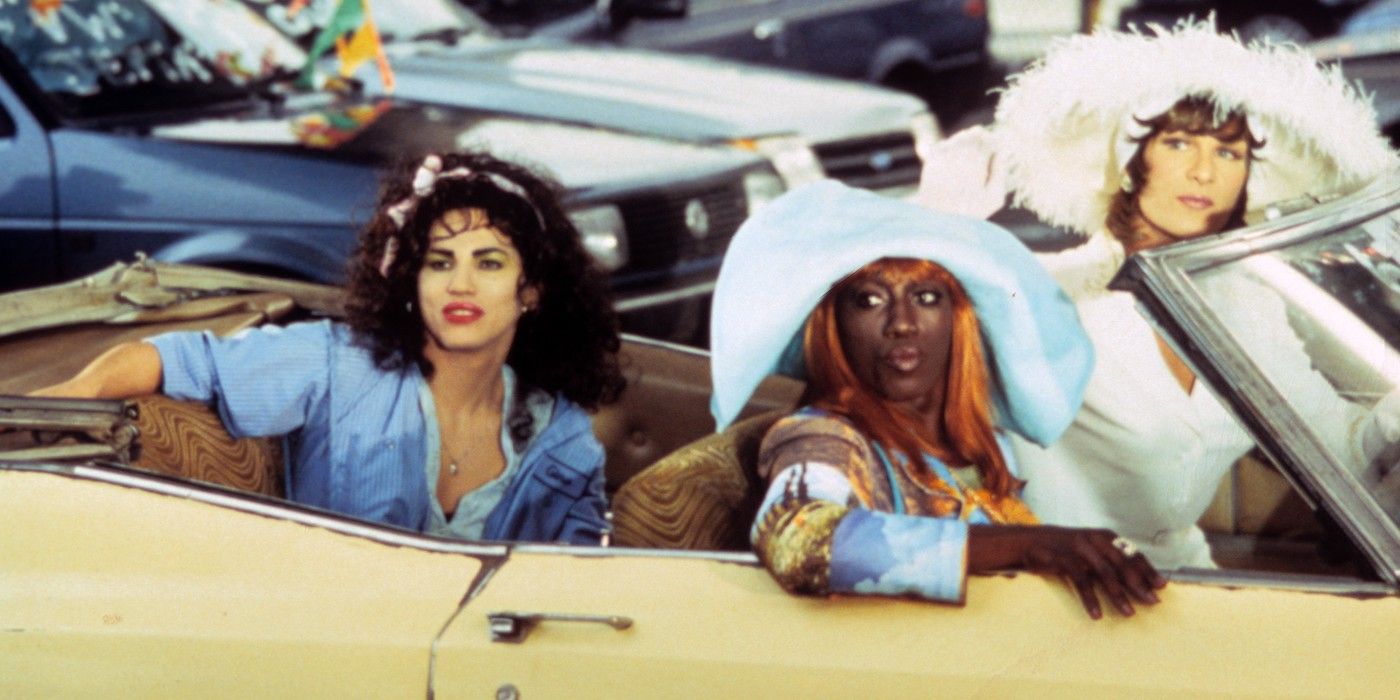Picture this — three big-name, cis-hetero, Hollywood stars are all playing drag performers in a blockbuster production, working alongside real LGBTQ+ drag artists like Lady Bunny and RuPaul. Over the course of their journey, they'll endure violence, discrimination, and even an attempted sexual assault by a police officer who they successfully outsmart by the end of the movie. Sound controversial? At the box office in 1995, under the lengthy name To Wong Foo, Thanks for Everything! Julie Newmar, it was number one.
Drag is hard to ignore. That's the point. As an art form, a drag performance is meant to be an over-the-top celebration of exaggeration in the face of being told to hide. And with that glittery exterior, it's almost impossible to turn a blind eye to the changing landscape of drag in the United States. In Tennessee, Governor Bill Lee recently signed a new classification into law classifying drag performers as "adult cabaret" performers, meaning they can no longer legally perform on public property. The long arc of history seems to be stretching into a horseshoe, moral panic rising from its '80s grave. In the wake of these resurfacing legal obstacles, it's time we explore To Wong Foo, Thanks for Everything! Julie Newmar's place in the queer cinema canon.
The Origins of Drag in Cinema
Aspects of drag have been integral to the performing arts since the earliest days of human culture. Japanese Kabuki theater and Ancient Greek theater both contain elements of what we call drag. Shakespeare's era famously forbade women from acting, requiring young men to perform some of the most famous female roles in Western literature. (Of course, Shakespeare did experiment with gender internally in his plays as well, exploring drag and desire in pieces like the comedy 'Twelfth Night.') And the influence of drag didn't end on the stage. The advent of motion pictures brought with it various forms of drag, including sex symbol Marlene Dietrich's famous suit-and-top hat-wearing character in 1930's Morocco and Katherine Hepburn as a boy in 1935's Sylvia Scarlett.
This boom had to end, though. Between 1934 and 1968, the Hays Code descended on Hollywood, banning the depiction of many of the themes these films explored. But art will always find a way. Some Like It Hot, from 1959, is considered one of the best comedies of all time, and 1982's Tootsie — for all of its many faults — pioneered some cultural interest in drag. If this timeline tells us anything, it's that the public's interest in drag isn't going anywhere.
The '90s were no different. The Adventures of Priscilla, Queen of the Desert, released in August 1994, bears many similarities with To Wong Foo, Thanks for Everything! Julie Newmar. Both films feature three drag performers traveling cross-countryside, out of their comfort zones, to get to a big opportunity. Both films have the group break down along the way, forcing them to come to terms with their differences. (Perhaps the two most glaring discrepancies are the country of origin and critical reception, and how Priscilla is considered a much better film.) The point here isn't about one ripping off the other. To Wong Foo, Thanks for Everything! Julie Newmar was already in production when Priscilla hit the scene. Rather, noting this marks an increased mainstream interest in queer stories. Of course, though progress was being made, uncertainty pushed back against new and positive media portrayals of queer people. Who can forget seeing people vomit at the forced outing of a trans woman in 1994's Ace Ventura Pet Detective? It's hard to believe that, just a year later, a movie featuring a trans character would be distributed by Universal Pictures, and become an American hit.
What 'To Wong Foo' Gets Right
Part of the intrigue of To Wong Foo, Thanks for Everything! Julie Newmar was the transformation of its stars. Even with an all-star lineup of cis-hetero-men, Wesley Snipes as Noxeema Jackson, Patrick Swayze as Vida Boheme, and John Leguizamo as young "drag princess" Chi-Chi Rodriguez create an explosive celebration of '90s drag culture. The film itself, a visually rich trip from the glitzy-yet-gritty New York City drag scene to the dusty corners of rural America, attempts to wrestle with everything from racism to domestic abuse — with varying degrees of success. What is consistently successful, however, is the spirit of the movie.
As we follow Noxeema, Chi-Chi, and Vida on their journey to turn around a depressed small town and get crowned Miss Drag Queen of America, we really root for the underdogs. They begin to enact change in the town simply through their presence. Chi-Chi falls in love, for example, while Vida attempts to save a woman from her abusive marriage. And as they champion the confidence of the town's locals, the locals band together to protect them from the obsessed cop tailing them. This results in an awesome, campy collaboration between the town's residents and the visiting queens. You just can't get better than everyone in town — from an elderly woman to Stockard Channing in a bright red wedding dress — standing, Spartacus-style, to declare they are all drag queens. To Wong Foo's thesis can be best seen here: Drag queens are human. So are you.
What We Can Learn From 'To Wong Foo, Thanks for Everything! Julie Newmar'
When To Wong Foo, Thanks for Everything! Julie Newmar came out, the film was criticized from within the queer community for its use of cis writers and cis-hetero actors. In its push to show drag performers' humanity, the film also leans a bit on the saccharine side at times — it's almost entirely devoid of sex. Today's social media users have even noted that a debut now might even attract protests.
Art reminds us both of how far we've come and how far we have left to go. It can teach us, and remind us of every person's humanity. To Wong Foo, Thanks for Everything! Julie Newmar is a slightly silly, highly saturated dip into drag culture. There's plenty to criticize about this film, and its existence provides context for what not to take with us into future, more aligned stories that celebrate the drag community.



